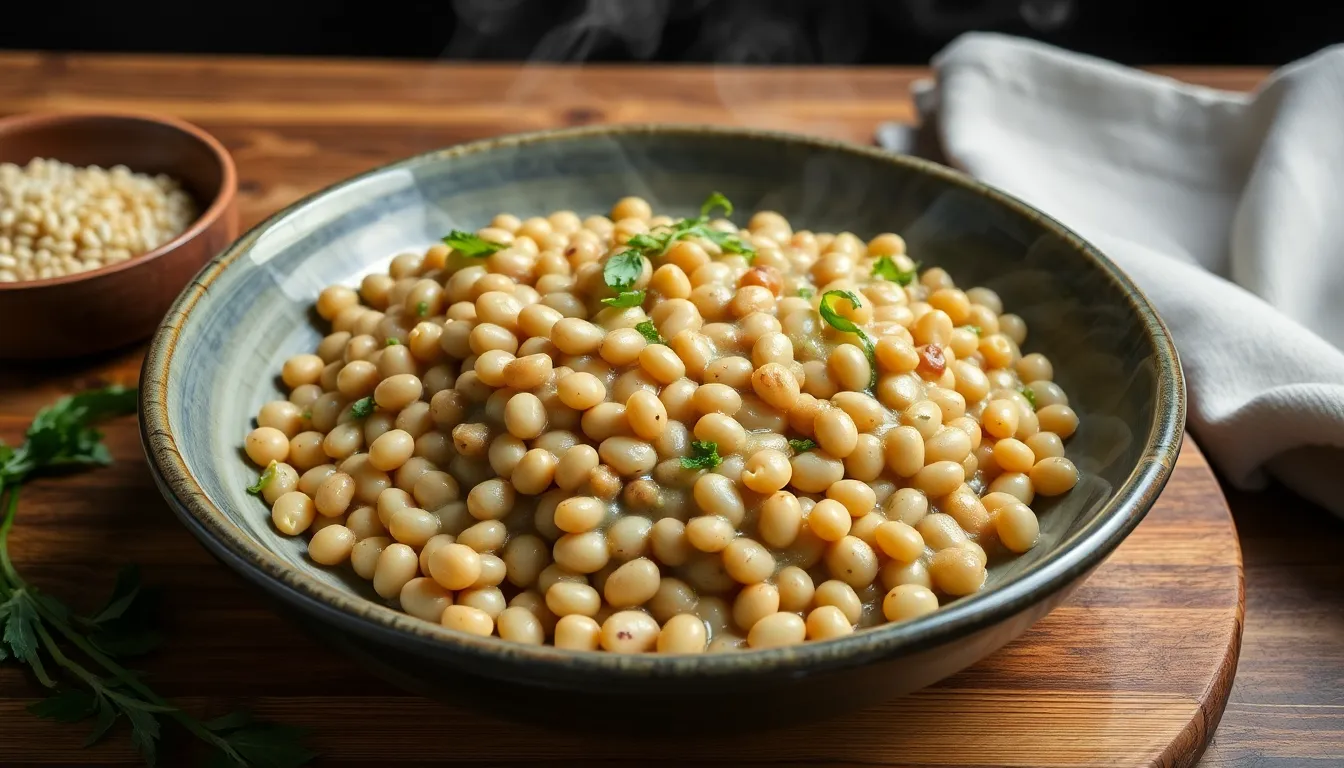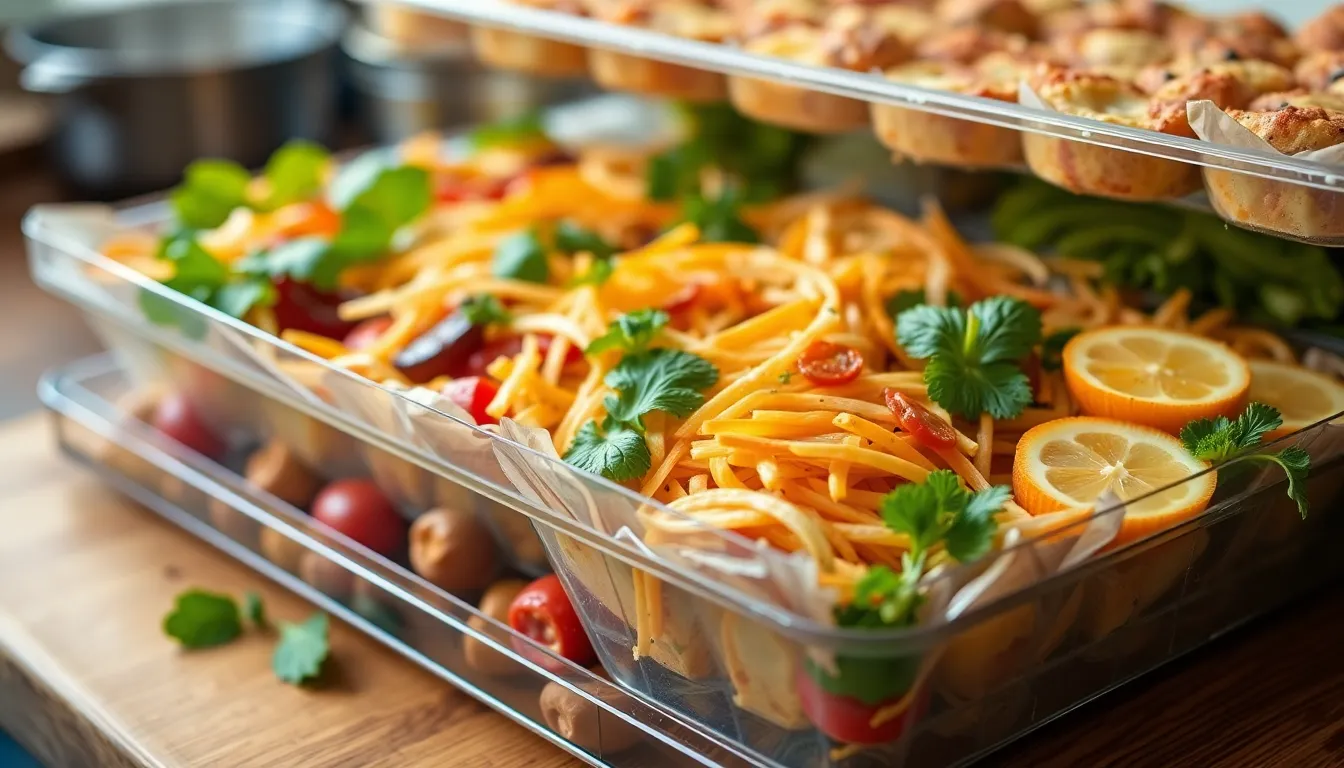How to Cook with Mung Beans: Delicious Recipes
Mung beans, small green legumes, are not only packed with nutrients but are also incredibly versatile in the kitchen. Known for their culinary adaptability, they can be used in a variety of dishes, ranging from soups and salads to curries and pancakes. This article aims to explore the delicious world of mung beans, highlighting their nutritional benefits and providing a collection of scrumptious recipes to try at home.
Section 1: Understanding Mung Beans
1.1 What Are Mung Beans?
Mung beans (Vigna radiata) are small, green legumes native to the Indian subcontinent. They have been cultivated for thousands of years and are a staple in many Asian countries. The beans are typically available in various types, with the most common being:
- Green Mung Beans: The most widely used type in recipes.
- Yellow Mung Beans: Often used in Indian cooking, they are hulled and split.
- Sprouted Mung Beans: Germinated for a crunchy texture and enhanced nutrition.
1.2 Health Benefits
Mung beans are not only delicious but also nutritious. Here’s a quick look at their nutritional profile:
- Protein: A great source of plant-based protein, making them suitable for vegetarians and vegans.
- Fiber: High in dietary fiber, promoting healthy digestion.
- Vitamins and Minerals: Rich in vitamins B1, B2, B3, and C, along with minerals like iron, magnesium, and potassium.
Some potential health benefits of mung beans include:
- Improved digestion due to high fiber content.
- Support for heart health by reducing cholesterol levels.
- Regulation of blood sugar levels, making them beneficial for diabetics.
Section 2: Preparing Mung Beans
2.1 How to Soak and Cook Mung Beans
Before cooking mung beans, it’s essential to soak them to improve digestibility and reduce cooking time. Here’s how to prepare them:
Step-by-Step Soaking Instructions:
- Rinse the mung beans under cold water to remove any debris.
- Place them in a bowl and add enough water to cover the beans by at least two inches.
- Allow them to soak for 4-6 hours (or overnight for better results).
Cooking Methods:
After soaking, mung beans can be cooked using various methods. Below is a comparison of different cooking methods:
| Cooking Method | Soaking Time | Cooking Time | Notes |
|---|---|---|---|
| Stovetop | 4-6 hours | 30-40 minutes | Best for larger quantities |
| Pressure Cooker | None | 10-15 minutes | Fastest method |
| Microwave | 2-4 hours | 20-25 minutes | Quick but less common |
Section 3: Delicious Mung Bean Recipes
3.1 Mung Bean Soup
This warm and comforting mung bean soup is perfect for chilly days. Here’s how to make it:
Ingredients:
- 1 cup mung beans, soaked and rinsed
- 1 onion, chopped
- 2 garlic cloves, minced
- 1 carrot, diced
- 4 cups vegetable broth
- 1 tsp cumin powder
- Salt and pepper to taste
- Fresh cilantro for garnish
Step-by-Step Instructions:
- In a large pot, sauté the onion and garlic until translucent.
- Add the diced carrot and cook for another 2-3 minutes.
- Stir in the soaked mung beans, cumin powder, salt, and pepper.
- Pour in the vegetable broth and bring to a boil. Reduce heat and simmer for 30-40 minutes, or until the beans are tender.
- Serve hot, garnished with fresh cilantro.
Tips for Garnishing and Serving:
Try adding a squeeze of lemon juice or a dollop of yogurt for added flavor!
3.2 Sprouted Mung Bean Salad
This refreshing salad is packed with nutrients from sprouted mung beans. Here’s a simple guide to making it:
Ingredients:
- 1 cup mung beans, soaked and sprouted
- 1 bell pepper, diced
- 1 cucumber, diced
- 1 small red onion, finely chopped
- Juice of 1 lemon
- Salt and pepper to taste</li
- Fresh herbs (cilantro or parsley) for garnish
Sprouting Process Explained:
- After soaking the mung beans for 4-6 hours, drain and rinse them.
- Place the beans in a jar or sprouting tray, cover with a cheesecloth, and keep in a dark place.
- Rinse and drain twice a day until sprouts appear, usually within 2-3 days.
Step-by-Step Preparation:
- In a bowl, combine the sprouted mung beans, bell pepper, cucumber, and onion.
- Drizzle with lemon juice and season with salt and pepper.
- Toss well and garnish with fresh herbs before serving.
Flavor Variations:
Add diced avocado, shredded carrots, or even a dash of hot sauce for an extra kick!
3.3 Mung Bean Curry
This hearty mung bean curry is comforting and full of flavor. Here’s how to prepare it:
Ingredients:
- 1 cup mung beans, soaked and rinsed
- 1 onion, chopped
- 2 garlic cloves, minced
- 1-inch piece of ginger, grated
- 2 tomatoes, chopped
- 1 can coconut milk
- 2 tsp curry powder
- Salt to taste
- Fresh cilantro for garnish
Method of Preparation:
- In a pot, sauté the onion, garlic, and ginger until fragrant.
- Add the chopped tomatoes and curry powder, cooking until tomatoes soften.
- Stir in the soaked mung beans and coconut milk. Bring to a boil, then reduce to a simmer.
- Cook for 30-40 minutes, or until beans are tender. Season with salt.
- Serve hot, garnished with fresh cilantro.
Cooking Tips for Perfect Texture:
For a creamier texture, mash some of the mung beans while cooking.
3.4 Mung Bean Pancakes
These savory pancakes are a unique way to enjoy mung beans. Here’s how to create them:
Ingredients:
- 1 cup mung bean flour (made from ground mung beans)
- 1 cup water
- 1 green onion, chopped
- 1/2 tsp salt
- Oil for frying
Detailed Cooking Instructions:
- In a bowl, mix mung bean flour, water, chopped green onion, and salt to form a batter.
- Heat oil in a skillet over medium heat. Pour a ladle of batter into the skillet, spreading it to form a pancake.
- Cook for about 2-3 minutes on each side, or until golden brown.
- Repeat with the remaining batter.
Serving Suggestions and Dips:
Serve with a spicy chutney or yogurt for dipping!
3.5 Mung Bean Stir-Fry
This quick stir-fry is perfect for busy weeknights. Let’s dive in:
Ingredients:
- 1 cup cooked mung beans
- 2 cups mixed vegetables (bell peppers, broccoli, carrots)
- 2 tbsp soy sauce
- 1 tbsp sesame oil
- 1 tsp ginger, grated
- Cooked rice or noodles for serving
Quick and Easy Preparation:
- In a hot pan or wok, heat sesame oil and sauté ginger until fragrant.
- Add mixed vegetables and stir-fry for 3-4 minutes.
- Stir in the cooked mung beans and soy sauce, cooking for another 2-3 minutes.
- Serve over rice or noodles.
Pairing Suggestions with Grains or Noodles:
This dish pairs beautifully with brown rice, quinoa, or whole wheat noodles.
Section 4: Storage and Leftover Ideas
4.1 How to Store Cooked Mung Beans
Storing cooked mung beans is simple. Here are some best practices:
- Allow cooked mung beans to cool completely.
- Transfer to an airtight container and store in the fridge for up to 5 days.
- For longer storage, freeze cooked mung beans for up to 3 months.
4.2 Creative Ways to Use Leftover Mung Beans
If you have leftover mung beans, consider these creative uses:
- Add them to wraps or burritos for extra protein.
- Mix them into grain bowls with your favorite veggies.
- Incorporate them into soups or stews for added texture.
For reheating, simply add them back to a pot with a splash of water or broth to keep them moist.
Conclusion
Mung beans are a powerhouse of nutrition and culinary versatility. From hearty soups and lively salads to satisfying curries and crispy pancakes, the possibilities are endless. We encourage you to try the recipes shared in this article and make mung beans a staple in your kitchen. Share your experiences and variations with us in the comments!
Call to Action
We would love to hear your thoughts on mung beans! Have you tried any of the recipes? Do you have your own unique mung bean dish to share? Please leave a comment below and join our community of cooking enthusiasts. Don’t forget to subscribe to our blog for more plant-based recipes and tips!
Additional Resources
For more information on beans and legumes, check out these resources:




